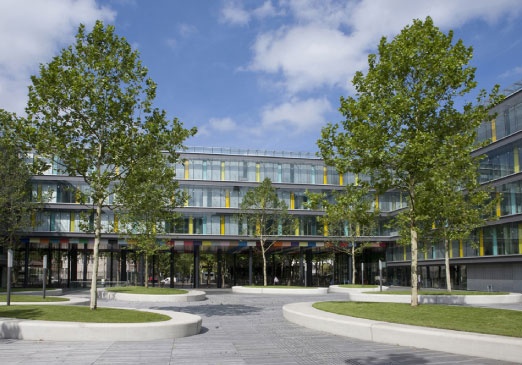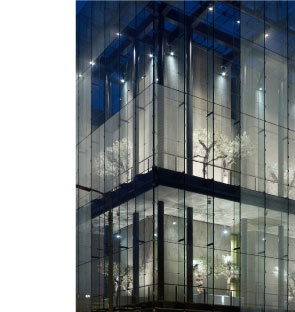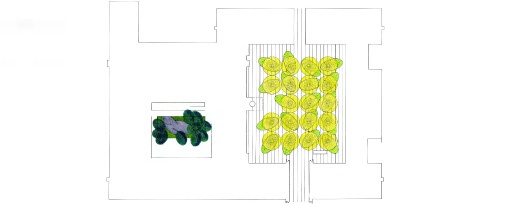

This building, designed by J. Vegter and M. Bolten and completed in 1975, is a late example of brutalism. Heavy and impersonal on the outside, it has a soft feel on the inside thanks to two gardens created by Pieter Buis.
When the building no longer met subsequent standards of comfort and transparency, the government ordered a renovation. For the first time ever, the government contracted out a similar project to a public-private partnership, resulting in considerable savings.
A key goal of the renovation was to embed the building in the surrounding urban fabric. As a result, one of the ministry’s two gardens became a public space, opening the building to the city and its inhabitants.
To enhance the building’s landmark function in the city, a winter garden was added to one of its corners, which had a particularly brutalist character. Olive trees, chosen for their sparse, silvery foliage, enhance the transparency of the conservatory.


The second, inner garden was transformed into an atrium. This is now the building’s heart and main entrance, with a new conference room beneath it. The atrium has tamarinds, philodendrons, ferns and orchids. Compact palm groves were inserted on the floors located between the office layers. The building was, in short, recycled.

Whereas one garden was turned into a lively atrium, the other, the Plane-tree court, was transformed into an enclosed public space.

Here, large oval tree-pots are playfully arranged at seat-height. Plane-trees rise up from grassy pillows to provide more or less intimate places for people to rest, read, eat or meet.
Client
Consortium Safire
In collaboration with
Meijer en van Schooten
Architecten
Francine van Kempen
Technician
Photography
Emilio Troncoso Larrain
Jeroen Musch